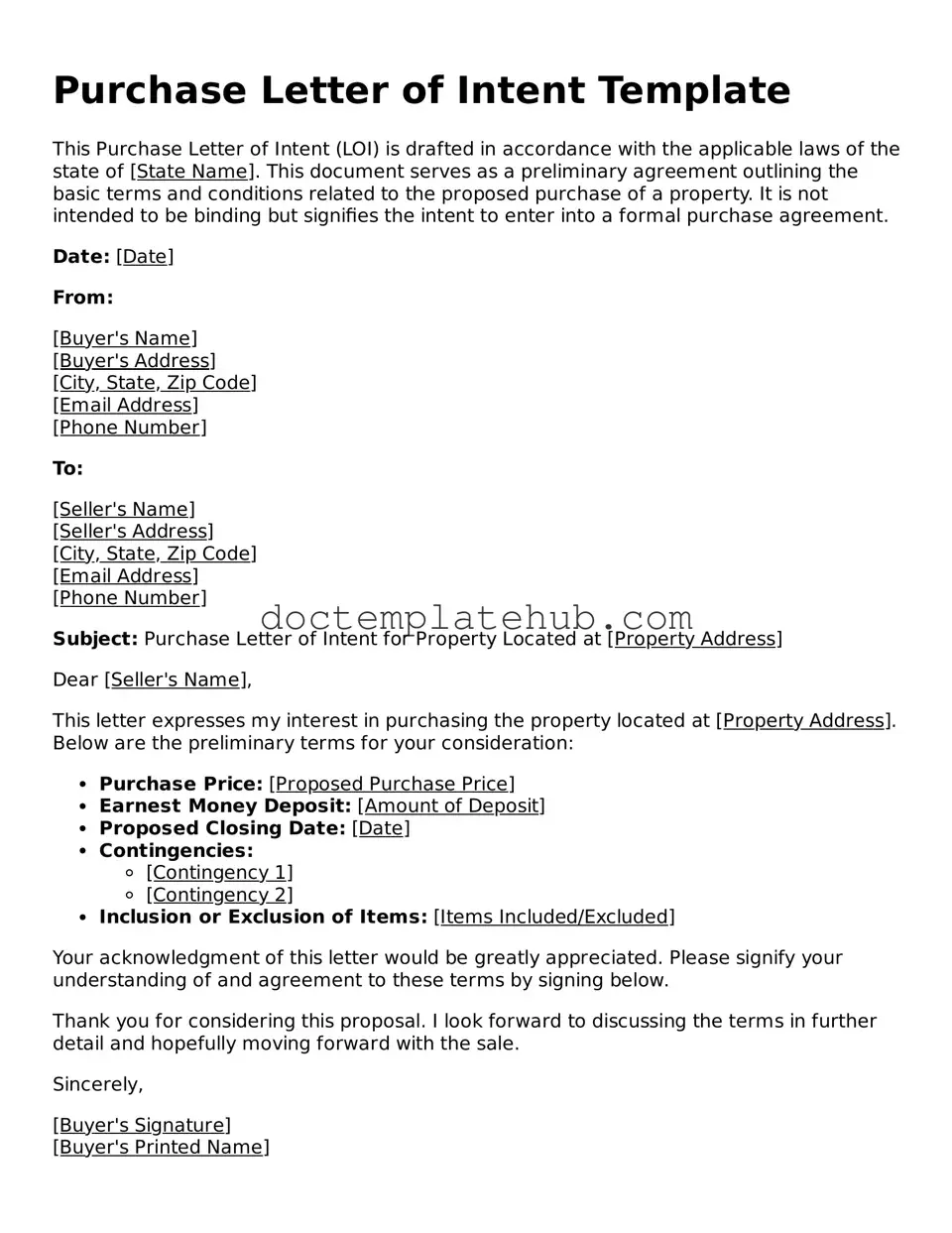What is a Purchase Letter of Intent?
A Purchase Letter of Intent (LOI) is a document that outlines the preliminary agreement between a buyer and a seller regarding the purchase of a property or business. It serves as a starting point for negotiations and expresses the buyer's intention to move forward with the transaction, pending further due diligence and formal agreements.
Why is a Purchase Letter of Intent important?
This document is important because it establishes the basic terms of the potential deal, such as the purchase price, payment terms, and any contingencies. It can help both parties clarify their intentions and expectations before committing to a more formal contract. Additionally, it can signal to other interested parties that the buyer is serious about the purchase.
Is a Purchase Letter of Intent legally binding?
Generally, a Purchase Letter of Intent is not legally binding, as it is primarily a statement of intent. However, certain sections may be binding, such as confidentiality clauses or exclusivity agreements. It’s essential for both parties to understand which parts of the LOI they are agreeing to and to seek legal advice if there are any uncertainties.
What should be included in a Purchase Letter of Intent?
A well-drafted Purchase Letter of Intent typically includes key elements such as the names of the parties involved, a description of the property or business, the proposed purchase price, payment structure, timelines for due diligence, and any contingencies that must be met before finalizing the sale. Including these details helps ensure clarity and sets the stage for future negotiations.
How does a Purchase Letter of Intent differ from a purchase agreement?
The Purchase Letter of Intent is a preliminary document that outlines the basic terms of a potential deal, while a purchase agreement is a formal contract that finalizes the terms of the sale. The purchase agreement is legally binding and includes comprehensive details about the transaction, whereas the LOI is more of a framework for negotiations.
Can a Purchase Letter of Intent be modified?
Yes, a Purchase Letter of Intent can be modified. If both parties agree to changes in terms or conditions, they can amend the LOI. It’s advisable to document any modifications in writing to maintain clarity and avoid misunderstandings in the future.
What happens after a Purchase Letter of Intent is signed?
Once the Purchase Letter of Intent is signed, the parties typically enter a due diligence period. During this time, the buyer conducts inspections, reviews financial documents, and assesses any risks associated with the purchase. If everything goes well, the buyer and seller will move forward to negotiate and draft a formal purchase agreement.
Do I need a lawyer to draft a Purchase Letter of Intent?
While it is not strictly necessary to have a lawyer draft a Purchase Letter of Intent, it is highly recommended. A legal professional can help ensure that the document accurately reflects the intentions of both parties and that it complies with applicable laws. Having legal guidance can also help prevent potential disputes down the line.
How long is a Purchase Letter of Intent valid?
The validity period of a Purchase Letter of Intent can vary based on the terms agreed upon by both parties. Typically, the LOI will specify a timeframe during which the buyer can conduct due diligence and finalize the purchase agreement. If the parties do not reach an agreement within this period, the LOI may become void unless extended by mutual consent.
